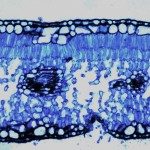Link to Pubmed [PMID] – 26081523
Lett. Appl. Microbiol. 2015 Sep;61(3):224-30
UNLABELLED: Vibrios are natural inhabitants of estuarine ecosystems and some species may pose public health problem as agents of sporadic or collective food-borne infections associated with the consumption of fish or shellfish. Samples of raw shrimp (n = 299), fished in coastal areas of the city of Agadir, Morocco, and collected from its fish marketplace, were examined for the presence of pathogenic vibrios. Microbiological analysis was carried out according to a protocol using thiosulphate citrate bile sucrose (TCBS) agar and CHROMagar Vibrio (CV) as selective media. Presumptive-positive colonies were identified by biochemical and species-specific PCR systems, and further tested by PCR for the presence of pathogenicity factors. The overall prevalence of Vibrio spp. in shrimps was 55·8%. Vibrio parahaemolyticus was recovered from 25 of 299 samples (8·4%), Vibrio cholerae from six samples (2%) and Vibrio alginolyticus from 161 samples (53·8%). No virulence genes were found among V. parahaemolyticus and V. cholerae isolates. The CHROMagar Vibrio plating medium was found to be more efficient than the Thiosulphate Citrate Bile salt Sucrose (TCBS) Agar in the isolation of Vibrio organisms.
SIGNIFICANCE AND IMPACT OF THE STUDY: A significant proportion of shrimps marketed and consumed in Morocco are caught in the coastal region of the city of Agadir. This study provides interesting data of prevalence of Vibrio spp. in raw shrimps as well as better understanding of their potential virulence. It is apparent from this study that genes and primers used in multiplex PCR for identification and detection of virulence factors, can be used to monitor shrimps for the presence of potentially pathogenic strains of Vibrio cholerae and Vibrio parahaemolyticus. The results highlight the added value of using a chromogenic medium for research and isolation of pathogenic Vibrio in seafood, more specific and accurate than TCBS.



